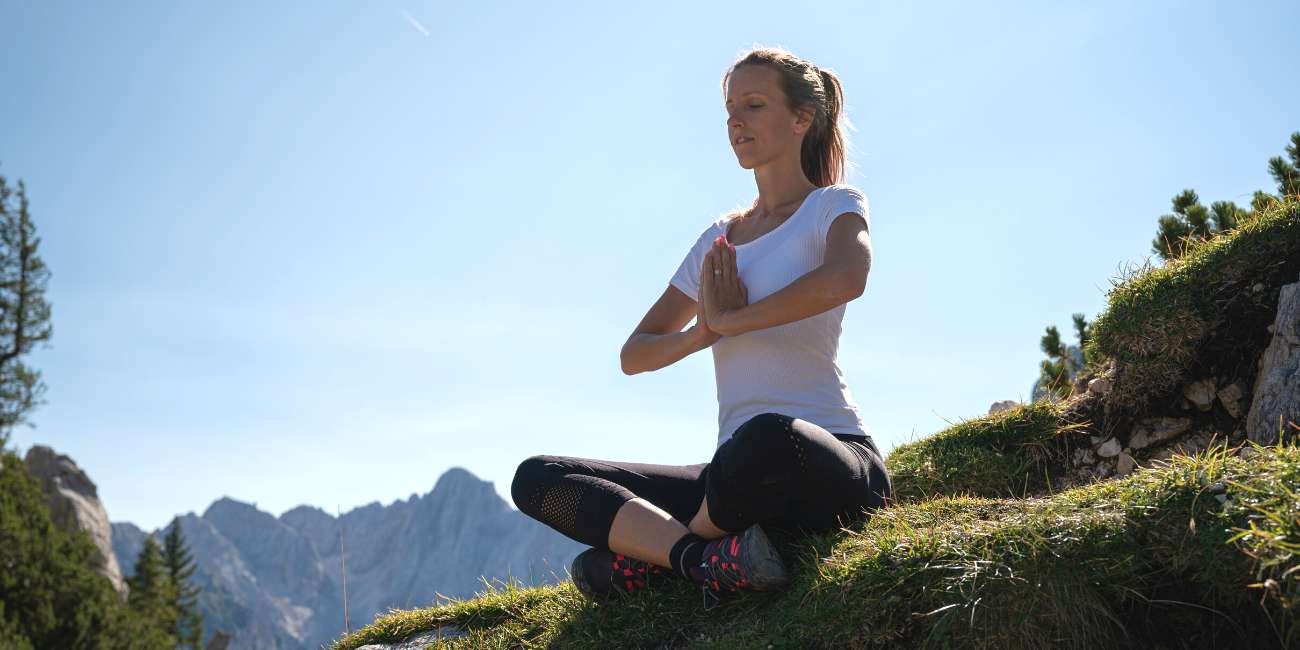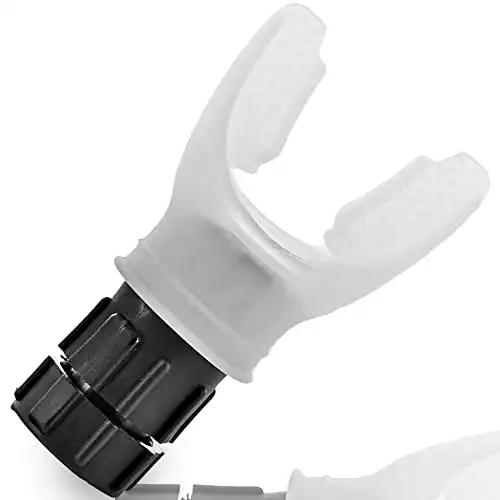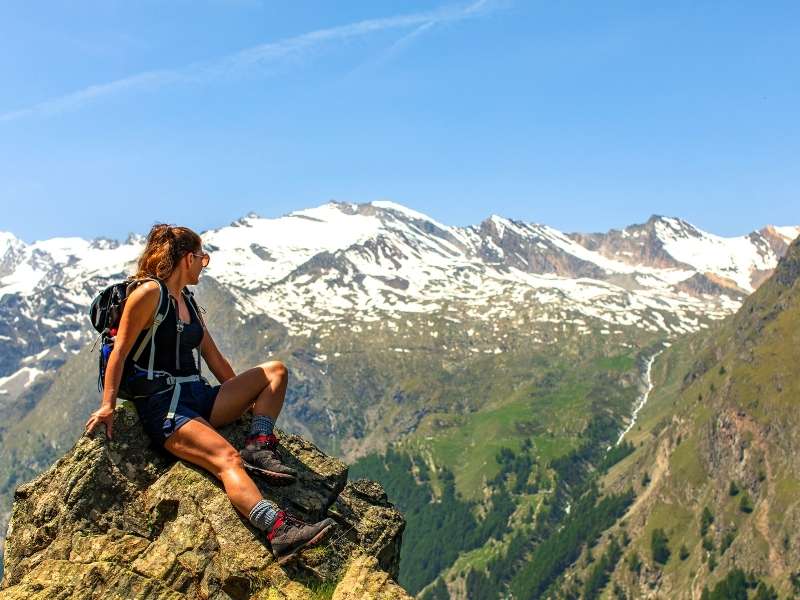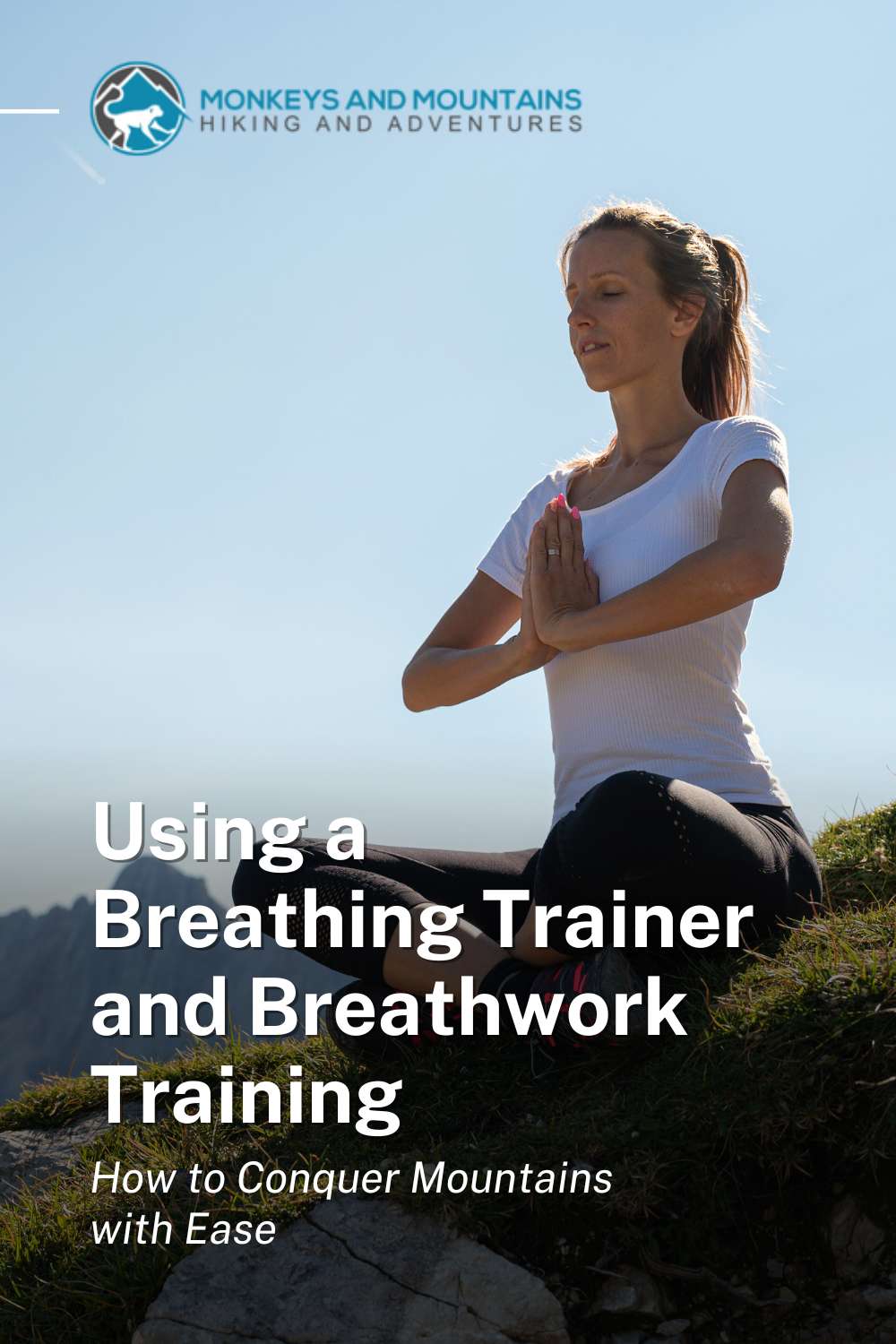Explore the essential guide on breathing trainers and breath work training for hikers. Unlock the secrets to enhanced hiking performance and overall well-being.
Table of Contents
Breathing: it’s the most natural thing in the world, yet so many of us don’t harness its full potential, especially when it comes to hiking. In our comprehensive guide, we delve into the world of breathing trainers and breathwork training specifically tailored for hikers. Whether you’re a seasoned trekker or just starting out, incorporating breathwork training can elevate your hiking experience by increasing your cardiovascular endurance and increasing your lung capacity.
As someone who’s been hiking for over 20 years, it took me much longer to get into breathwork than it should have, given all of the benefits. And I only bought a breathing device when recovering from long term covid and experiencing an extreme shortness of breath. Let’s dive in.
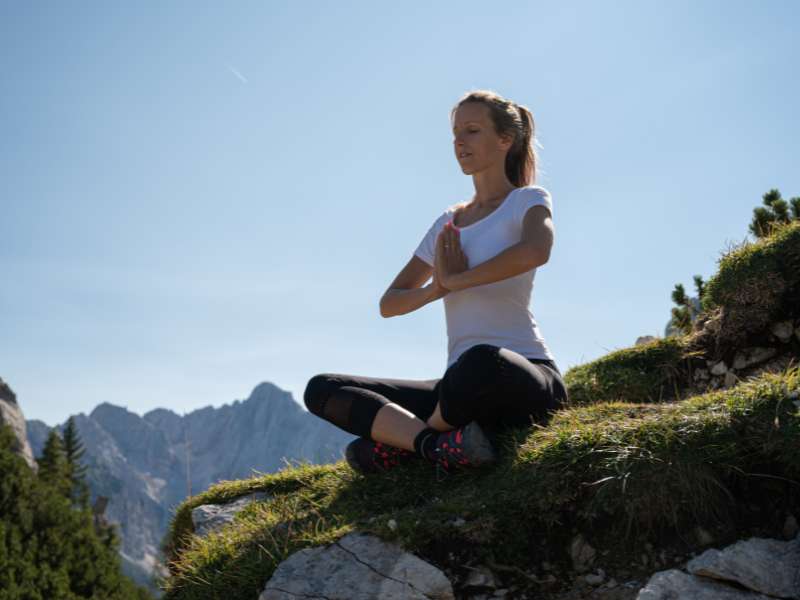
The Science Behind Breathwork Training: How it Enhances Your Hiking Performance
Specific breathing techniques can profoundly impact a hiker’s performance, endurance, and overall well-being.
Physiology: Oxygen, Muscles, and Stamina
Breathwork primarily influences the body’s physiological processes. When we engage in targeted breathing techniques, we optimize the amount of oxygen that enters our bloodstream. This oxygen is vital for muscle function, especially during activities like hiking where endurance is key.
-
Increased Lung Capacity: Regular breathwork exercises can gradually increase lung capacity, allowing hikers to take in more air with each breath. This expanded capacity is particularly beneficial when tackling long trails or ascending steep inclines, where oxygen demand is higher.
-
Enhanced Oxygen Utilization: Efficient breathing not only increases the volume of air intake but also enhances the body’s ability to utilize oxygen. This efficiency is crucial for converting oxygen into energy, which fuels muscle activity during hikes.
-
Improved Aerobic Performance: Enhanced oxygen intake and improved oxygen systems and utilization lead to better aerobic performance. This improvement is noticeable in that when hiking, you can breathe better and hike for longer without succumbing to fatigue.
Scientific research from the National Library of Medicine found that in comparison to conventional training methods, combined training with breathing resistance and sustained physical exertion is beneficial for increasing endurance capacity and respiratory muscle function.
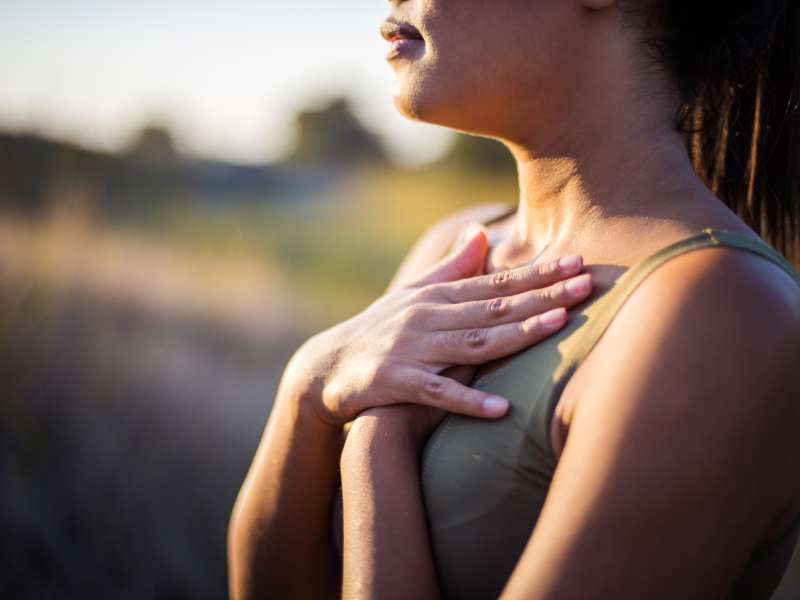
Psychological Benefits: Stress Reduction and Mental Clarity
The psychological aspects of breathwork are just as important, especially when faced with the mental challenges of hiking.
-
Stress and Anxiety Management: Controlled breathing exercises are known to activate the parasympathetic nervous system, which helps in reducing stress and anxiety levels. This calming effect is essential for hikers who may face challenging or unexpected situations on the trail.
-
Focus and Mental Clarity: Breathwork aids in maintaining focus and mental clarity. This clear-mindedness is vital for navigation and decision-making when hiking.
-
Mind-Body Connection: Effective breathwork strengthens the connection between mind and body. A hiker who is in tune with their breathing is more attuned to their body’s signals, allowing for a more harmonious and enjoyable hike.
New research reports that breath control can have a huge impact on the quality of your life, and lead to overall general well-being with a study titled:
How Breath-Control Can Change Your Life: A Systematic Review on Psycho-Physiological Correlates of Slow Breathing
Recovery and Adaptation
Post-hike recovery is just as crucial as the hike itself, and breathwork plays a significant role here.
-
Quicker Recovery: By practicing controlled breathing after a strenuous hike, one can lower the heart rate and promote relaxation, leading to a quicker recovery.
-
Reduced Muscle Soreness: Proper oxygenation during and after hiking can help in reducing muscle soreness and fatigue. This benefit is particularly helpful for hikers on multi-day trips.
-
Adaptation to High Altitude: Regular breathwork training can aid in acclimatization, especially for hikes at higher altitudes like Kilimanjaro where oxygen levels are lower.
In conclusion, the science behind breathwork for hikers and overall sports performance is a blend of enhancing physical capabilities and nurturing mental resilience. By integrating these breathing techniques into their routine, hikers can experience a noticeable improvement in their hiking performance, enjoy faster recovery times, and maintain a more focused and calm mindset during their adventures.
Choosing the Right Breathing Trainer: A Hiker’s Guide
Selecting the right breathing trainer is a crucial step for hikers looking to enhance their lung capacity and overall performance on the trails. Here, we’ll explore three specific breathing trainer products, including the “Expand-A-Lung Breathing Trainer Fitness Trainer,” each tailored to suit different needs and preferences.
• DAILY WORKOUT - Enhance your fitness, build muscle strength, and engage in stress management with this trainer.
• ADAPTABLE - Suited for a diverse range of individuals, including athletes, musicians, and the average person. It is especially effective for high-energy sports like swimming, athletics running, gymnastics, martial arts, and other outdoor activities that demand increased physical exertion.
• USER-FRIENDLY - Crafted with a lightweight design, featuring a high-quality flexible silicone mouthpiece and a durable ABS handle.
• PORTABLE & PRACTICAL - Its compact size enables easy carrying in your handbag or pocket, allowing you to complete your daily training regimen wherever you go.
I bought this respiratory trainer when recovering from covid and shortness of breath to increase my lung capacity and to boost my stamina. I choose it because it has adjustable resistance levels, small size and was easy to use.
Overall, I’ve been happy with it and have noticed my lung function improved, my core muscles seemed tighter and my general overall exercise performance increased. I also found hiking to be easier. I noticed results after a couple of weeks with regular training sessions every day. And I find the results to compound, the more you use it, the more improvements to my respiratory system and sport performance. A year later, I’m still using it reguarly – several times a week, although admittedly not daily, as I should be.
However, if I was going to buy a deep breathing lung exerciser again, I would choose the Breather Fit below:
The breathing exercise device come in 3 different resistant levels for your individual needs and training levels. The Breather and the Breather Pink offer light to medium resistant. Breather Fit and Breather Voice offer strong resistance and the Breather Recover has a light resistance. All models have six levels of adjustable resistance and come with a free virtual training through the app to help you track your progress. Plus, you get access to the Breather University portal offering free monthly courses.
Plus, there’s the option to buy a carrying case which is handy if you plan to take it with you.
For the purposes of using a breathing trainer to increase lung capacity, to engage your abdominal muscles and to improve athletic performance, and to prepare for a difficult hike I’d recommend the Breather Fit.
The Breather Fit is an inspiratory muscle trainer that helps train your lungs to improve oxygen flow to your body; Oxygen training can help improve overall physical performance and give you an advantage over your competition.
Other benefits include:
• improves cardio performance
• Increases lactate threshold
• Improves HRV
• Reduces dyspnea
All Breather Fit training devices have six levels of adjustable resistance and come with access to the mobile app that offers a free virtual respiratory muscle training plan to help you track your training progress. Plus, you can connect with your coach and see how your results compare to others, which I find interesting.
Even if you don’t compare yourself, the training plan and monitoring your progress will lead to more significant improvements and the best results, than just doing the exercises. Tracking your progress is a key component of peak performance – something that’s missing with the respiratory device that I use, which is a key reason why I think the best lung exerciser devices are The Breather Fit.
Plus, you get access to the Breather University portal which offers free monthly courses on the latest scientific research on respiratory health.
Although I think the quality of the breathing devices and impact on respiratory muscles is similar, it’s the breathing training It’s for the above two reasons that I would recommend the Breather Fit.
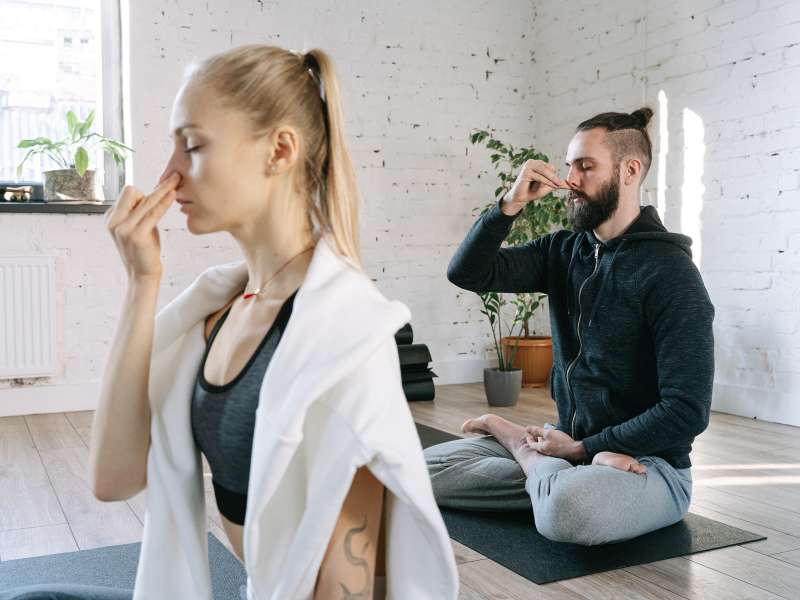
Breath Work Without a Breathing Trainer
While I personally love using a breathing trainer and think it strengthens your lung muscles faster, you can also work your breathing muscles and improve the quality of life by doing breathwork, without a breathing device.
And by using specific breathing patterns, you can energize yourself, relax, or increase your lung capacity. I often do breathwork for energy in the morning when I need a quick pick me up and use alternate nostril breathing when I’m feeling stressed and need to relax.
Here are some specific breathing techniques that are particularly beneficial for expanding lung capacity, ensuring that hikers are well-prepared for the physical demands of their journey.
1. Buteyko Breathing
Developed by Ukrainian physician Konstantin Buteyko, this method focuses on reducing breathing rate and volume. This is one of the most interesting patterns of breathing for hikers since it can help prepare you for high altitude hikes like Kilimanjaro or Everest Base Camp.
-
How to Practice:
- Sit or lie comfortably, focusing on your natural breathing.
- Gently decrease the volume of each breath, to the point where it feels slightly less than what you need.
- Hold this reduced breathing for a few minutes, then breathe normally.
- Practice daily for increasing periods.
-
Benefits for Hikers:
- Increases carbon dioxide tolerance, which can be beneficial for high-altitude hiking like doing Kilimanjaro or Everest Base Camp.
- Improves oxygenation of tissues and organs.
2. Deep Diaphragmatic Breathing (Belly Breathing)
This fundamental technique focuses on engaging the diaphragm, a major muscle in the respiratory system.
-
How to Practice:
- Lie down or sit comfortably.
- Place one hand on your chest and the other on your belly.
- Breathe in deeply through your nose, ensuring your belly pushes against your hand more than your chest does.
- Exhale slowly through pursed lips, using the hand on your belly to help push air out.
- Repeat for 5-10 minutes daily.
-
Benefits for Hikers:
- Increases lung capacity by fully engaging the lower part of the lungs.
- Enhances oxygen intake, vital for strenuous hiking activities.
- Promotes relaxation, reducing pre-hike stress or anxiety.
3. Pursed Lip Breathing
This technique helps control breathing and can be particularly useful for managing shortness of breath during a hike.
-
How to Practice:
- Inhale slowly through your nose for about two seconds.
- Pucker your lips as if you’re about to whistle.
- Breathe out gently through pursed lips for approximately four seconds.
- Practice this for a few minutes each day.
-
Benefits for Hikers:
- Slows down breathing, allowing for better breath control.
- Helps in expelling all the air from the lungs, making room for deeper breaths.
4. Rib Stretch Breathing
This technique stretches the lungs to their full capacity, improving overall lung function.
-
How to Practice:
- Stand upright and exhale all the air from your lungs.
- Slowly inhale, filling your lungs as much as possible while raising your arms overhead.
- Hold your breath for about 10-15 seconds, then slowly exhale and lower your arms.
- Repeat 3-5 times.
-
Benefits for Hikers:
- Expands the rib cage, allowing the lungs to take in more air.
- Enhances lung elasticity and capacity.
5. Alternate Nostril Breathing
Originating from yoga, this technique can improve lung function and balance the body’s energy channels.
-
How to Practice:
- Sit in a comfortable position.
- Place your right thumb over your right nostril and inhale deeply through your left nostril.
- Close your left nostril with your fingers, then exhale through the right nostril.
- Inhale through the right nostril, close it, and exhale through the left.
- Continue this pattern for several minutes.
-
Benefits for Hikers:
- Balances the flow of air through both nostrils, enhancing overall respiratory efficiency.
- Calms the mind, preparing hikers mentally for the trail ahead.
Free Breathwork Training Videos
And, as promised, here’s a link to some of my favourite breathwork training practices on YouTube that will lead to better breathing. Here’s a link. While I do believe that longer breathing practices are beneficial, and do do them occasionally, I find I’m more likely to do a shorter practice that’s just 5 or 10 minutes more regularly, which is why most of these are quite short – one even shows you how to improve your lung capacity in 60 seconds!
I put my favourite, Wim Hof breathing at the top. You can read more about Wim Hof breathing and what I learned from attending a Wim Hof workshop. I also put my favorite Better Than Coffee 5 minute breathwork session near the top. I do this one a few times a week. There’s a variety from relaxing ones to lower heart rate, to Buteyko Breathing to help you prepare for a high altitude hike like Kilimanjaro, to ones improving lung strength and cardiovascular health. Some are quite high intensity, you’ll feel like you’ve done a workout, while others lead you through effective breathing techniques to lower your blood pressure or to give you a better sleep.
I’m always on the lookout for new breathwork practices, so if you come across a good one, please let me know and I’ll add it to the list. Note: I’m not affiliated with any of the breathwork practitioners or respiratory therapists in the videos. These are just ones that I’ve found to be useful and have helped increase my oxygen uptake.
